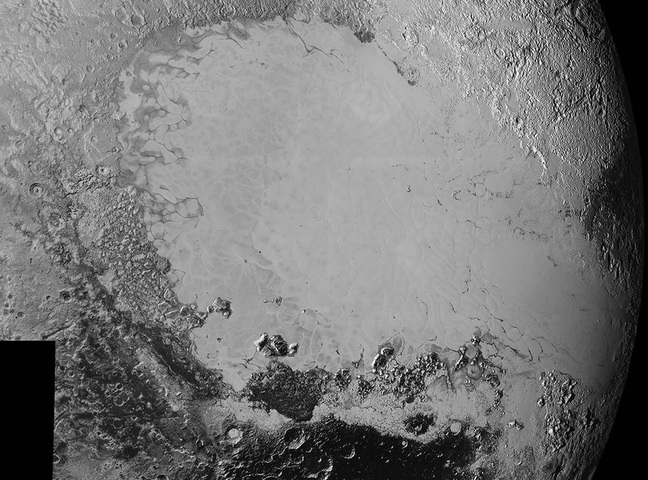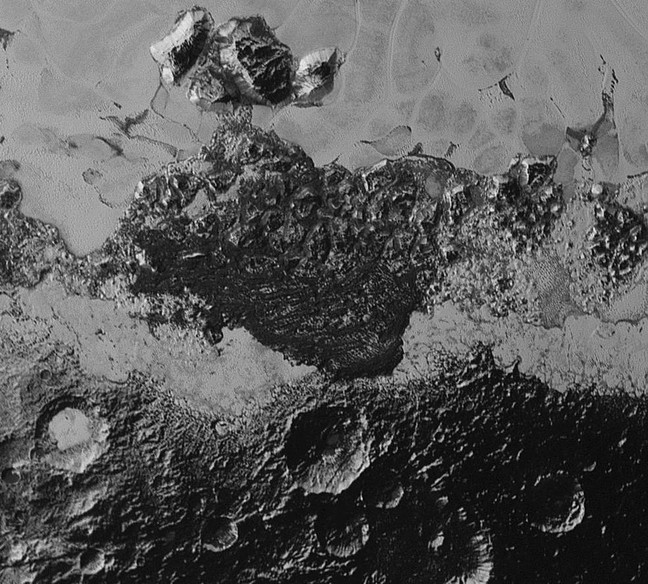This article is more than 1 year old
MYSTERIES of remote ICE WORLD PLUTO: New pics BAMBOOZLE boffins
NASA releases complicated batch of New Horizons snaps
Top space brains have confessed that a new batch of Pluto images downloaded from the New Horizons probe have left them stumped.
Let's go straight to the snaps to see what it is exactly that has got the boffins so baffled.
The pic below has been described as a “synthetic perspective view of Pluto, [that] shows what you would see if you were approximately 1,100 miles (1,800 kilometres) above Pluto’s equatorial area, looking northeast over the dark, cratered, informally named Cthulhu Regio toward the bright, smooth, expanse of icy plains informally called Sputnik Planum.”

Synthetic perspective view of Pluto seen from notional 1,100 miles (1,800 kilometres) above Pluto’s equatorial area.
Pic credit: NASA/Johns Hopkins University Applied Physics Laboratory/Southwest Research Institute. Embiggen here
Jeff Moore, leader of the New Horizons geology, geophysics and imaging team has opined that “randomly jumbled mountains might be huge blocks of hard water ice floating within a vast, denser, softer deposit of frozen nitrogen”.
Next up, an image that NASA said “illustrates the incredible diversity of surface reflectivities and geological landforms on the dwarf planet.”
Apparently the photo below depicts “dark, ancient heavily cratered terrain; bright, smooth geologically young terrain; assembled masses of mountains; and an enigmatic field of dark, aligned ridges that resemble dunes; its origin is under debate.”

Diverse Plutonian geology. Embiggen here
Pic credit: NASA/Johns Hopkins University Applied Physics Laboratory/Southwest Research Institute
These shots, and the others posted here, have one thing in common: humanity has next to no idea what we're looking at, nor do we know how Pluto ended up in the shape we've found it in.
NASA's boffins believe we might be looking at “dunes, nitrogen ice flows that apparently oozed out of mountainous regions onto plains, and even networks of valleys that may have been carved by material flowing over Pluto’s surface.”
What we can do is compare Pluto's sights to those elsewhere in the Solar System. Doing so reveals that the dwarf planet proves to be every bit as complex as Mars, according to Moore.
Even Pluto's atmosphere and moons have turned out to be more complex than imagined. This shot of Charon, for example, revealed “surprisingly complex geological history, including tectonic fracturing”. Another new download of Pluto's atmosphere was described as showing “a large number of discrete haze layers in the atmosphere.”
And there's plenty more to come: NASA said that the New Horizons probe started its year-long download last weekend. There's a raw images site here carrying snaps from the spacecraft's Long Range Reconnaissance Imager, if you like your updates early and often.
As no doubt many of us do. ®
